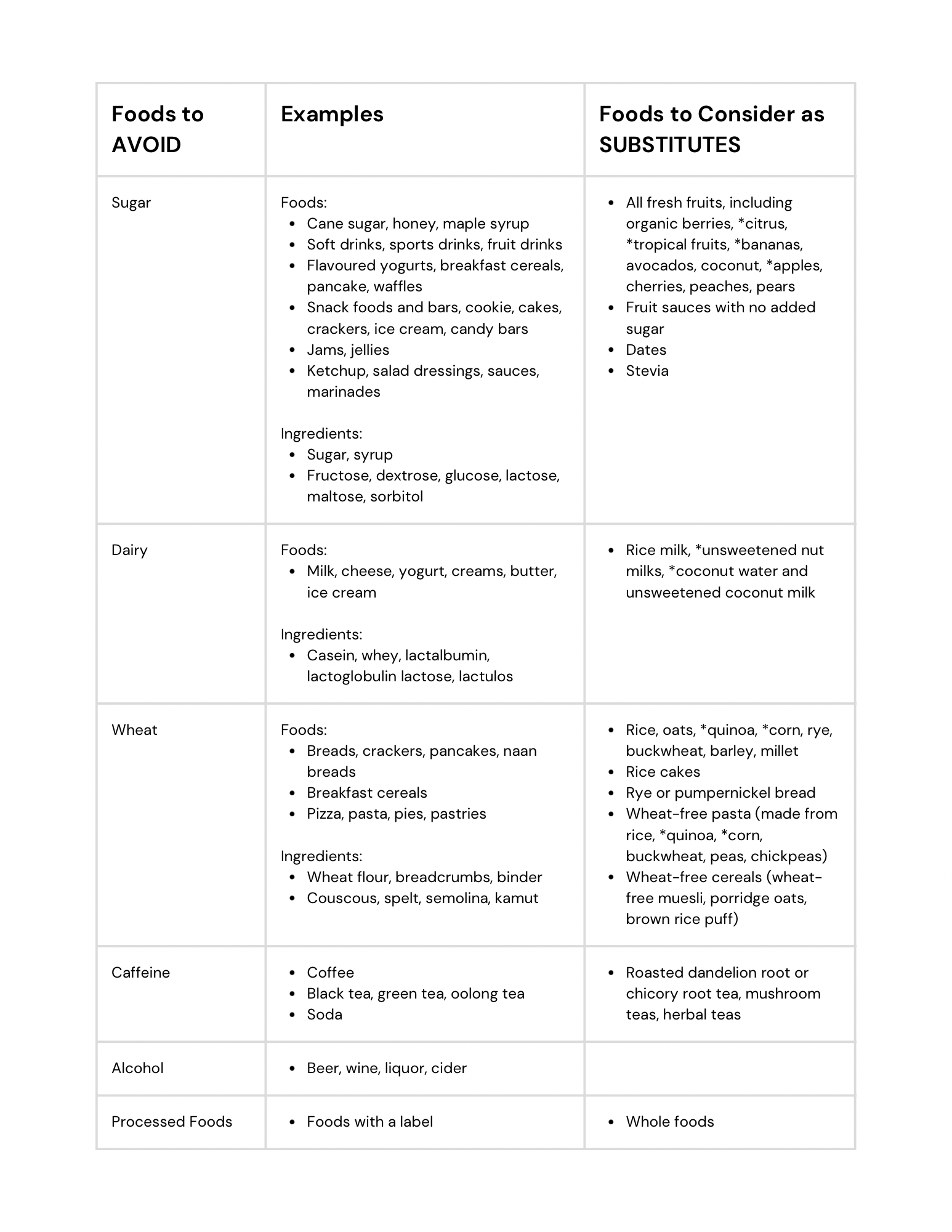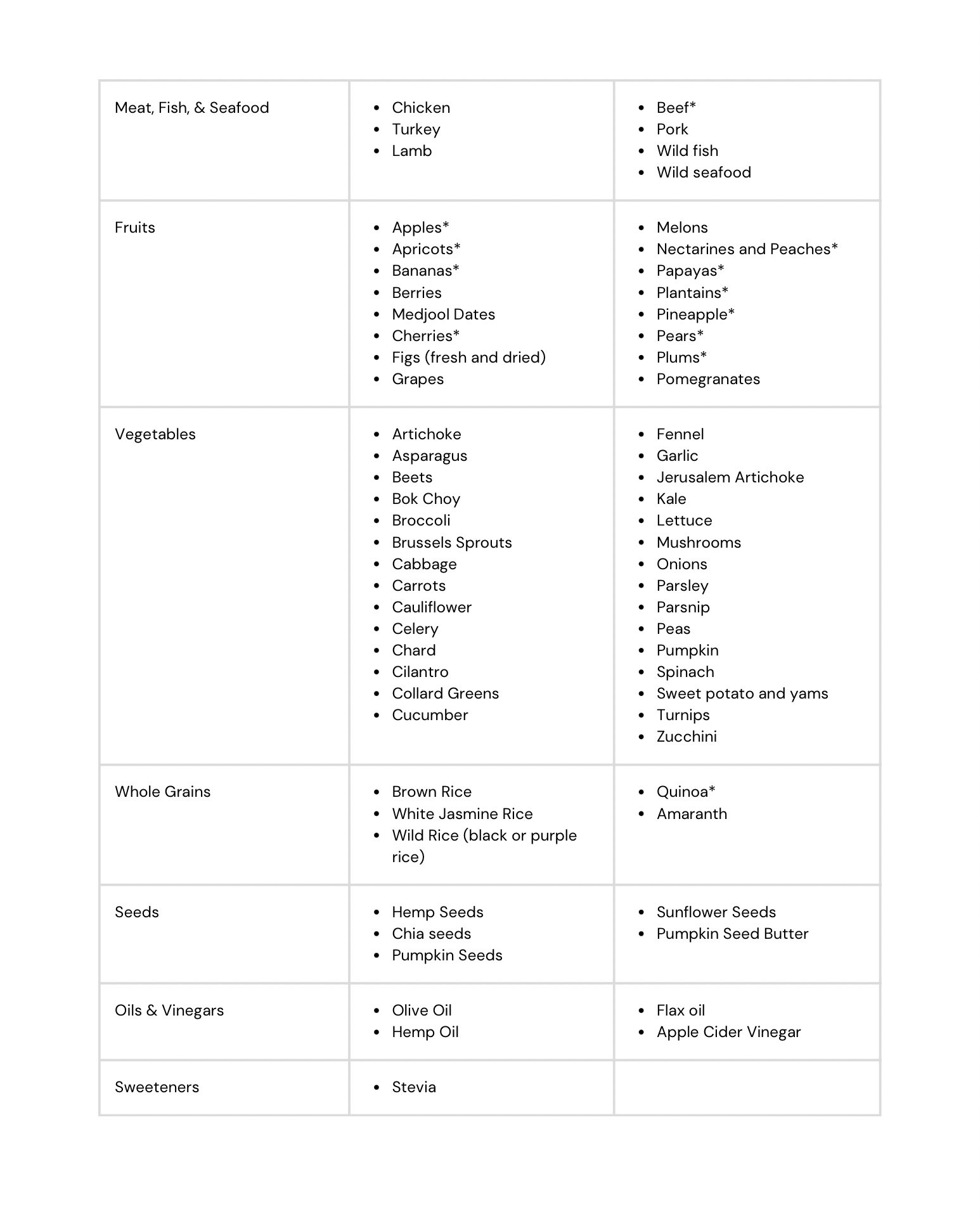Targeting Inflammation: Elimination Diet
The elimination diet is a common therapeutic nutrition approach naturopathic doctors and dieticians use with patients. We’re going to explore what the elimination diet is and how to use it to target foods that are causing inflammatory reactions in your body. For a review on inflammation and inflammatory foods, check out our previous blog post “Inflammatory Foods vs. Anti-Inflammatory Foods: Finding Balance for Optimal Health”.
Inflammation is a natural response by the body to protect itself against injury and infection. However, when inflammation becomes chronic, it can lead to a host of health problems, including autoimmune diseases, digestive issues, skin issues, and joint pain. Diet plays a crucial role in modulating inflammation. One approach that has gained popularity in the medical community is the elimination diet. Read along as we delve into the concept of the elimination diet and explore how it can be a powerful tool for supporting inflammation.
What is the Elimination Diet?
The elimination diet is a structured eating plan designed to identify and remove potential trigger foods that may be contributing to inflammation and other adverse reactions in the body. The premise is simple and described in the technique’s name: temporarily eliminate certain foods known to be common allergens or irritants, observe how your body responds, and then systematically reintroduce these foods to identify specific triggers.
The Phases of the Elimination Diet
Elimination Phase: During this stage, specific food groups known to be potential inflammatory triggers are removed from the diet. Common culprits include gluten, dairy, soy, eggs, corn, peanuts, refined sugars, and artificial additives. The elimination phase typically lasts for about 2 to 4 weeks.
A detailed list of all foods to avoid or include in the elimination diet is below, but this is a quick summary:
· Definitely avoid: sugar, dairy, wheat, caffeine, alcohol, processed foods
· Avoid for general food sensitivity: eggs, night shades, citrus, tropical fruits, bananas, avocados, coconut, soy, corn
· Additional foods to consider avoiding for more intense sensitivity testing: nuts, apples, cherries, peaches, pears, almonds, seafood and shellfish, quinoa
Observation Phase: Once the trigger foods have been removed, it's time to observe how your body responds. Pay close attention to any changes in symptoms, such as reduced joint pain, improved digestion, or increased energy levels. It is helpful to keep a journal during this entire experience to keep track of your symptoms, noting their increases and decreases.
Reintroduction Phase: After the observation period, you'll gradually reintroduce the eliminated foods, one at a time, while closely monitoring your body's reactions. This step helps identify specific triggers that may be contributing to inflammation or other health issues.
Here are some important tips for the reintroduction phase:
· Reintroduce one food group at a time
· Start with the food group you most desire
· The food group must be in diet for at least 1-3 meals/day
· If your symptoms are getting worse: take out the recently introduced food group right away and make note of it
· Once symptoms resolve, move on to the next food group to reintroduce
· After reintroducing the food group for at least 3 days and there has been no change in symptoms, make note of this and then you can go ahead and add in the next food group you desire
· Keep repeating!
NOTE: If a food causes you to have an immediate allergic reaction, such as throat swelling, a severe rash, or other severe allergy symptoms, seek medical care and avoid food reintroductions unless you are directly supervised by a physician.
Benefits of the Elimination Diet for Inflammation Support
Identifying Trigger Foods: The elimination diet serves as a powerful tool to identify specific foods that may be causing inflammation or exacerbating existing health conditions. By pinpointing these triggers, you can make informed dietary choices that better support your overall well-being.
Reducing Chronic Inflammation: By removing potentially inflammatory foods from your diet, you create an environment in which your body can heal and reduce chronic inflammation. This can lead to improvements in various inflammatory-related conditions.
Improving Digestive Health: The elimination diet can help identify food sensitivities or intolerances that might be causing digestive discomfort, such as bloating, gas, or irritable bowel syndrome (IBS).
Boosting Energy and Vitality: As inflammation decreases and the body's systems start functioning optimally, many people experience increased energy levels, mental clarity, and an overall sense of vitality.
Tips for a Successful Elimination Diet
Seek Professional Guidance: Before starting an elimination diet, consult with an experienced naturopathic doctor, healthcare professional, or registered dietitian. They can help tailor the plan to your specific needs and ensure you meet all your nutritional requirements.
Keep a Food Journal: Tracking your meals, symptoms, and any changes you notice during each phase can provide valuable insights and help you stay organized throughout the process.
Stay Patient and Persistent: Identifying trigger foods can be a gradual process, and it's essential to be patient and persistent. The benefits of a well-executed elimination diet are worth the effort.
Embrace Whole, Nutrient-Dense Foods: Focus on consuming nutrient-rich whole foods during the elimination phase to support your body with essential vitamins and minerals.
All the Details for the Elimination Diet
*also remove food if it is on your elimination list provided by your healthcare practitioner. As all medical treatment should be, this process needs to be customized to the individual patient.
Foods to include during this process
Something that is more positive to focus on is the foods you should be including during this process! Summary of selected foods to INCLUDE:
Final Thoughts on the Elimination Diet
The elimination diet can be a powerful tool for those seeking inflammation support and looking to improve their overall health and well-being. By removing potential trigger foods and reintroducing them systematically, you can identify specific dietary factors contributing to inflammation and other health issues. Remember that each individual's response to the elimination diet may vary, and it's essential to consult with a healthcare professional throughout the process. With dedication, patience, and a commitment to your well-being, the elimination diet can guide you towards a more balanced and inflammation-resistant lifestyle. Always remember that a balanced diet, regular exercise, and stress management are essential components of overall health and well-being. This can be difficult and restrictive, so remember this is not some healthy new diet you will be keeping for long. This is a functional tool to assess which foods cause inflammatory reactions in your body. The restriction is temporary, but the results once you can find the culprit food in your diet can be extremely helpful for improving your health.
It is also important to note that anyone with a history of any eating disorder or restrictive eating issues should likely not consider the elimination diet as a therapeutic tool. This should not be done without supervision of an experienced health care practitioner. Ideally this is a naturopathic doctor who has a comprehensive understanding of your health history and current medical conditions. It is critical to ensure caloric and macronutrient adequacy during the elimination phase of this process. The elimination diet is a medical tool and is not a suitable or needed choice for everyone.
*This is not medical advice and is only intended for educational purposes only. Please always consult your medical doctor, naturopathic doctor, chiropractor, or preferred health care practitioner prior to beginning any treatment*
Resources
Atkinson, W., Sheldon, T. A., Shaath, N., & Whorwell, P. J. (2004). Food elimination based on IgG antibodies in irritable bowel syndrome: a randomised controlled trial. Gut, 53(10), 1459–1464. https://doi.org/10.1136/gut.2003.037697/
Dhar, S., & Srinivas, S. M. (2016). Food Allergy in Atopic Dermatitis. Indian journal of dermatology, 61(6), 645–648. https://doi.org/10.4103/0019-5154.193673
Heal the Gut with the IFM Elimination Diet. (n.d.) The Institute for Functional Medicine
Lipski, L. (PhD). Comprehensive elimination diet - oxford university press. https://global.oup.com/us/companion.websites/9780195371109/pdf/00_Mullin_Appendix_3.pdf
Lomer M. C. (2015). Review article: the aetiology, diagnosis, mechanisms and clinical evidence for food intolerance. Alimentary pharmacology & therapeutics, 41(3), 262–275. https://doi.org/10.1111/apt.13041
UW Integrative Health. (n.d.) The Elimination Diet. University of Wisconsin, Madison, School of Medicine and Public Health




